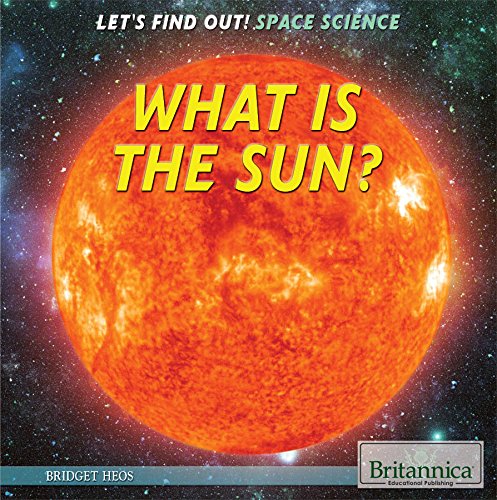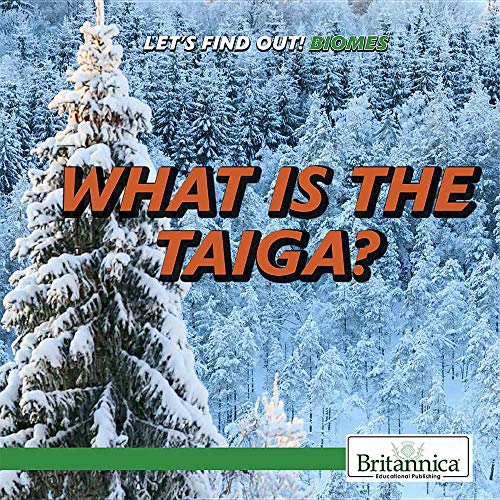-
What Is The Sun?
Bridget Heos
Library Binding (Britannica Educational Pub, Aug. 1, 2014)This simple guide to the sun and stars will engage readers with the fundamentals of astronomy, detailing how the heavenly bodies affect one another and how they ultimately affect us. The material covers basic science curriculum for this reading level, making it an important supplement for students who want to study independently, teachers who want to provide supplemental materials, or readers who simply want to know more about the universe. The accessible and straightforward language makes this volume and intriguing read. M
M
-
What Are Fish?
Bobi Martin
Paperback (Britannica Educational Pub, Jan. 1, 2017)Many animals live in water, but only some can be defined as fish. Twenty-eight thousand species of fish exist, each with different characteristics. Readers from grades one through four will learn that fish have a distinct impact on their ecosystem and will see how fish survive when well-adapted to an uncompromised environment. Beautiful photographs demonstrate the great diversity of fish and accompany intellectually stimulating explanations of their varying roles and traits. From page to page, what a fish is unfolds in vocabulary call-outs, insightful questions, and relatable compare-and-contrast examples. N
N
-
Let's Find the Tiger
Tiger Tales, Alex Willmore
Board book (Tiger Tales., Oct. 1, 2019)There are animals playing among the trees, but could any of them be Tiger? Peek through the pages and lift the felt flaps to find out! K
K
-
What Is the Milky Way?
Edward Willett
Paperback (Britannica Educational Pub, Aug. 1, 2014)The Milky Way is just one of billions of galaxies in the universe. Yet by exploring the galaxy we call home, we have been able to uncover some of the universes many unknowns. This illuminating volume carefully breaks down the features of the Milky Way galaxy. It explains such characteristics as size, shape, and age; examines planets, stars, and star clusters; and delves into such concepts as black holes and dark matter. Important terms are explained, and, throughout the text, readers are invited to think critically about pertinent questions and concepts. T
T
-
What Is a Constellation?
Laura Loria
Paperback (Britannica Educational Pub, Aug. 1, 2014)To bring some semblance of order to the vast night sky, ancient astronomers assigned patterns to the stars that shown around them. These became known as constellations. This book provides insight into the scientific aspects of constellations?as star maps and navigation tools?as well as more fanciful interpretations, including a discussion of the zodiac. The stories associated with some of the most recognizable constellations and boxed inserts posing questions that drive readers to further investigation round out the coverage. R
R
-
What Are Jobs and Earnings?
Marcia Amidon Lusted
Library Binding (Rosen Education Service, Aug. 15, 2016)Having a job and earning money are a part of everyday life for most people, especially adults. The concept seems fairly straightforward: one works to earn. This volume discerns the difference between a job and a career, as well as how a job can develop into a career. Readers will learn why a communitys economy needs jobs, how paying someone to do a job helps the person who is paying them, and even about job loss and its consequences. The text also explains different jobs and their effects on the economy, such as those of professional, production, arts, and government and military jobs. X
X
-
The Nitrogen Cycle
Bobi Martin
Paperback (Britannica Educational Pub, Jan. 15, 2018)From tiny organisms to plants and people, all living things need nitrogen. This engaging STEM resource introduces elementary school readers to the importance of the nitrogen cycle in clear, easy-to-follow text. Readers will learn why nitrogen is an essential nutrient for growth, where nitrogen is found, the important role legumes play in the nitrogen cycle, and more. Colorful illustrations and photographs add interest and additional information to each page. Compare and Contrast, Vocabulary, and Think About It sidebars support Common Core standards. This is a must-have book for any shelf. M
M
-
What Is a Planet?
Jeff Mapua
Paperback (Rosen Education Service, Aug. 1, 2014)The wide range of planets in our small solar system alone is remarkable--giant planets; dwarf planets; rocky, watery, and gaseous planets; frigid planets and blazing-hot planets; and planets surrounded by rings or multiple moons. Then travel beyond our solar system and begin exploring the so-called exoplanets, and the variety is even more dazzling. Even readers who think they know everything about planets will find much to intrigue, excite, and thrill them here, including fascinating facts, the latest findings, and eye-popping, full-color, high-definition photos and explanatory graphics. A must-have foundational resource for every burgeoning space scientist. O
O
-
What Is Mechanical Energy?
Kristina Lyn Heitkamp
Paperback (Britannica Educational Pub, Aug. 15, 2017)Energy is everywhere. Introduce young readers to mechanical energy with this visually engaging text. Mechanical energy is defined through accessible language, explaining basic concepts such as potential and kinetic energy. Learn how mechanical energy has been harnessed in inventive ways over the course of history. Readers discover different sources of mechanical energy and how it can be transformed through real-world examples. The text also shares opportunities to observe and measure mechanical energy in the classroom and beyond, and it features questions that encourage the reader to investigate the topic further. I
I
-
What Is the Taiga?
Caitie McAneney
Paperback (Rosen Education Service, Jan. 15, 2019)The taiga is unlike any other place on Earth. It is the largest biome on Earth, with long, cold winters that can reach negative 65 degrees Fahrenheit! The plants, animals, and people that live in the taiga are built for survival. This book introduces readers to the landforms, climate, plants, animals, and people of the taiga, as well as the dangers it faces. Colorful photographs and engaging text serve as a passport to this one-of-a-kind biome. T
T
-
What Are Producers and Consumers?
Marcia Amidon Lusted
Paperback (Rosen Education Service, Aug. 15, 2016)Readers will learn about the important relationship between producers and consumers as well as buyers and sellers and how they all work together to create a healthy economy. This instructive volume defines basic economic concepts like goods and services and explains production with examples of the different types of production. It also covers the primary and secondary industries that produce goods. Concepts such as marketing and advertising are also covered, for a well-rounded view of this fascinating aspect of the economy. X
X
-
What We Eat
Katy Duffield
Paperback (Ready Readers, July 1, 2018)What we eat depends on where we live. People eat different things in different parts of the world. Find out about the different types of food people enjoy eating. Paired to the fiction title Eating Around the World. E
E